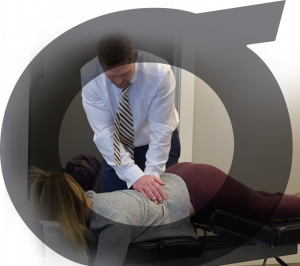Corrective Chiropractic: Back Surgery Alternatives

Green Chiropractic
Dr. Toby Green
Recent studies released by The National Center for Biotechnology Information (NCBI) confirms what the chiropractic community has been preaching for years. Despite the severity of back pain, there is significant hope for full recovery by means of getting treatment from a chiropractor versus going through invasive back surgery. The study concentrated on workers suffering from back injury and released shocking data on just how unnecessary back surgery may be. As stated below in the official excerpt from the NCBI website, when back pain patients saw a back surgeon first, they were 42.7% more likely to go through with back surgery as means of treatment. Compare that number to only 1.5% of patients who first saw a chiropractor. So what does all this mean? Chiropractic works, and it works without invasive surgery or habit forming pain medication. According to these numbers, more than 98% of patients who saw their chiropractor experienced a significant reduction or elimination of their back pain, so had no need to see a back surgeon. These patients were then able to get back to work within a few short weeks or months and live a normal life again. Despite what back surgeons have been trained to say or do, surgery is not the only answer, nor should it be your first choice. The cutting edge science of chiropractic has helped millions of Americans avoid back surgery through non-invasive treatment methods – something that the medical field is not proud to admit. So why put yourself under the knife when all it takes is seeing your chiropractor? [hr2] Study Design Prospective population-based cohort study. Objective To identify early predictors of lumbar spine surgery within 3 years after occupational back injury. Summary of Background Data Back injuries are the most prevalent occupational injury in the United States. Few prospective studies have examined early predictors of spine surgery after work-related back injury. Methods Using Disability Risk Identification Study Cohort (D-RISC) data, we examined the early predictors of lumbar spine surgery within 3 years among Washington State workers, with new workers compensation temporary total disability claims for back injuries. Baseline measures included worker-reported measures obtained approximately 3 weeks after claim submission. We used medical bill data to determine whether participants underwent surgery, covered by the claim, within 3 years. Baseline predictors (P < 0.10) of surgery in bivariate analyses were included in a multivariate logistic regression model predicting lumbar spine surgery. The area under the receiver operating characteristic curve of the model was used to determine the model’s ability to identify correctly workers who underwent surgery. Results In the D-RISC sample of 1885 workers, 174 (9.2%) had a lumbar spine surgery within 3 years. Baseline variables associated with surgery (P < 0.05) in the multivariate model included higher Roland-Morris Disability Questionnaire scores, greater injury severity, and surgeon as first provider seen for the injury. Reduced odds of surgery were observed for those younger than 35 years, females, Hispanics, and those whose first provider was a chiropractor. Approximately 42.7% of workers who first saw a surgeon had surgery, in contrast to only 1.5% of those who saw a chiropractor. The area under the receiver operating characteristic curve of the multivariate model was 0.93 (95% confidence interval, 0.92-0.95), indicating excellent ability to discriminate between workers who would versus would not have surgery. Conclusion Baseline variables in multiple domains predicted lumbar spine surgery. There was a very strong association between surgery and first provider seen for the injury even after adjustment for other important variables. Article Link http://www.ncbi.nlm.nih.gov/m/pubmed/23238486/?i=2&from=spine%202013.%20early%20predictors%20of%20lumbar%20surgery [hr2] Chiropractic BioPhysics or CBP – the most scientific and researched corrective chiropractic care – aims to eliminate nerve interference by realigning the spine back to its normal shape. The majority of patients under the care of a CBP chiropractor not only report an immediate end to their neck or back pain, but more importantly feel vibrant, energized, and notice their overall health improving every day.
Article can be found at Ideal Spine Blog: https://idealspine.com/corrective-chiropractic-back-surgery-alternatives/
